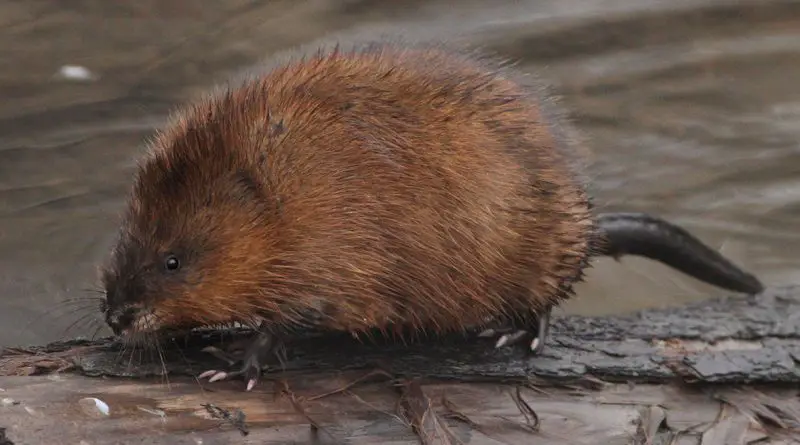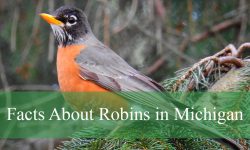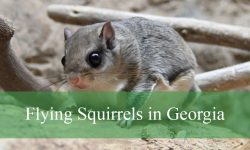Amid the cattails and still waters of Illinois’s wetlands, a small but industrious creature goes about its work unnoticed. Its slick brown fur ripples through the marshes, its long tail trailing like a rudder as it builds intricate lodges and channels. This unassuming animal is the muskrat—one of the most fascinating and overlooked residents of the Illinois marshlands.
Despite their name, muskrats aren’t rats at all. They’re semiaquatic mammals related to voles and lemmings, yet they’ve evolved unique behaviors and adaptations that allow them to thrive in the watery landscapes of the Midwest. From constructing dome-shaped lodges to surviving icy winters beneath frozen ponds, muskrats are masters of marsh survival.
In this detailed guide, we’ll explore unknown facts about muskrats in Illinois marshlands—their biology, behavior, role in the ecosystem, and surprising importance to wetland health. Whether you’re a wildlife enthusiast or simply curious about these elusive creatures, you’ll soon see why muskrats deserve far more attention than they get.
The Muskrat: Illinois’s Hidden Marsh Engineer

Scientific Classification
- Common Name: Muskrat
- Scientific Name: Ondatra zibethicus
- Family: Cricetidae
- Order: Rodentia
Though they resemble small beavers, muskrats are a distinct species with unique features that make them perfectly adapted to marsh life.
Appearance and Size
Muskrats are medium-sized rodents with compact, muscular bodies, short front legs, and webbed hind feet. Adults typically measure 16–25 inches long, including their long, vertically flattened tails that act like rudders when swimming.
Their dense, waterproof fur ranges from reddish-brown to dark chocolate and traps air to keep them warm in cold water. A muskrat’s fur is so effective that it was once highly prized in the fur trade, second only to beaver pelts.
A Marshland Resident
In Illinois, muskrats inhabit virtually every wetland—from the Mississippi River floodplains to Chain O’Lakes, Cache River, and Emiquon National Wildlife Refuge. They thrive anywhere with slow-moving or still water and abundant vegetation such as cattails, bulrushes, and water lilies.
Behavior and Lifestyle
The Ultimate Builder
Muskrats are famous for their lodges—domed structures made of vegetation, mud, and reeds. These lodges can reach 3 feet high and 6 feet across, featuring underwater entrances that protect against predators and harsh weather.
In deeper waters, they also dig bank burrows, creating tunnels that lead to nesting chambers above the waterline. These burrows can weaken levees and dikes, sometimes causing conflicts with humans.
Family Life
Muskrats are social animals, often living in small family groups. A typical group consists of a breeding pair and their offspring. They are territorial, marking their boundaries with musky secretions from scent glands—hence their name, “muskrat.”
During Illinois’s mild seasons, they can produce two or three litters per year, each containing 4–8 young. The babies, called kits, are born blind and hairless but grow quickly. Within a month, they can swim and begin exploring outside the lodge.
Activity Patterns
Muskrats are primarily nocturnal and crepuscular, active at night and during dawn or dusk. In winter, they remain active beneath the ice, maintaining open breathing holes and feeding chambers. Their adaptability allows them to survive freezing temperatures that drive other species into dormancy.
Diet: Nature’s Vegetarian Engineer
What Muskrats Eat
Muskrats are omnivorous, but their diet is mostly plant-based. They consume a variety of wetland vegetation, including:
- Cattails
- Bulrushes
- Water lilies
- Pondweeds
- Arrowheads
They also eat small aquatic animals like crayfish, frogs, mussels, and snails—especially when vegetation is scarce.
Feeding Habits
Muskrats don’t eat inside their lodges. Instead, they build feeding platforms—small floating mats of vegetation where they sit and nibble. You can often spot these platforms near marsh edges, marked by chewed stems and piles of plant remains.
Ecological Impact
By feeding on cattails and other fast-growing aquatic plants, muskrats help maintain open water channels, preventing wetlands from becoming overgrown. This creates a balance that benefits waterfowl and other aquatic life.
Muskrats in Illinois Ecosystems
Keystone Species
Muskrats are considered ecosystem engineers. Their lodges and feeding platforms create habitats for insects, fish, turtles, and birds. Abandoned lodges are often used by ducks, geese, mink, and snakes as shelter.
Their burrowing activity also aerates soil and regulates water flow, shaping the structure of entire marsh ecosystems.
Importance to Other Wildlife
- Ducks and Geese: Use muskrat lodges for nesting or as lookout points.
- Turtles and Amphibians: Bask or overwinter inside old burrows.
- Fish: Benefit from open-water channels created by muskrat feeding.
- Predators: Muskrats are prey for foxes, mink, coyotes, eagles, and large snapping turtles.
Thus, even in death, muskrats contribute to the food web, sustaining a wide range of marshland species.
Unknown and Fascinating Facts About Muskrats
- They can hold their breath for up to 15 minutes, allowing them to stay underwater longer than most small mammals.
- Their teeth are orange, colored by iron deposits that strengthen them for gnawing tough vegetation.
- They build winter food caches, storing roots and plants in underwater piles near their lodges.
- Muskrats use tail slaps to communicate danger, similar to beavers.
- They can swim backward using their tail for steering—a rare skill among mammals.
- Their fur stays dry even underwater, thanks to dense underfur and oily guard hairs.
- Muskrats mate for multiple seasons and sometimes form lifelong bonds.
- They can have up to three generations living together in one lodge during summer.
- Their scent glands produce a musky odor once used in perfume making.
- Despite being called “rats,” muskrats are more closely related to voles and lemmings than to true rats.
Seasonal Life in Illinois Marshlands
Spring
Muskrats emerge from their winter lodges as ice melts. Breeding begins, and vegetation becomes abundant again. Territories are reestablished, and lodges repaired.
Summer
This is the most active period for muskrats. They feed constantly, raise young, and build feeding platforms. Marshlands buzz with activity as birds, turtles, and muskrats coexist in close quarters.
Fall
Muskrats prepare for winter by reinforcing lodges and building food caches. Young from earlier litters leave to establish their own territories.
Winter
Even under ice, muskrats remain active. They rely on their stored food and lodge insulation to survive. The thick ice layer above them keeps predators out and temperatures relatively stable.
The Relationship Between Muskrats and Humans
Benefits to Wetland Health
While often misunderstood, muskrats play a positive role in Illinois’s wetlands. Their activities:
- Create habitat diversity
- Increase open water areas
- Improve nutrient cycling
- Support fish and bird populations
Conflicts and Control
However, muskrats sometimes come into conflict with humans when they burrow into levees, dams, and embankments, potentially causing erosion or flooding.
To manage these issues, wildlife authorities recommend habitat management rather than eradication. This includes maintaining balanced water levels and vegetation, which naturally limits muskrat populations.
Fur Trade Legacy
In the 19th and 20th centuries, muskrats were a major source of income for trappers. Illinois’s fur industry thrived on their pelts, which were used for coats and hats. Though fur demand has declined, sustainable trapping remains legal and regulated through the Illinois Department of Natural Resources (IDNR).
Adaptations for Aquatic Life
Built for the Water
Muskrats’ adaptations make them one of North America’s most efficient swimmers:
- Webbed hind feet provide propulsion.
- Flattened tails act like paddles.
- Nostrils and ears close underwater to prevent flooding.
- Dense fur traps warm air for insulation.
They can dive deep and navigate murky waters using their sensitive whiskers and keen sense of smell.
Temperature Tolerance
In Illinois’s cold winters, muskrats survive by reducing activity levels and sharing lodges to conserve heat. Their thick fur and metabolic control allow them to remain active even when air temperatures drop below freezing.
Myths and Misconceptions About Muskrats
Myth |
Truth |
|---|---|
Muskrats are rats. |
False. They are voles’ aquatic relatives, not rats. |
They destroy wetlands. |
False. They help maintain ecological balance and open-water areas. |
They eat fish. |
Rarely. Their diet is 95% plants. |
They hibernate in winter. |
False. They remain active under ice. |
Muskrat populations are out of control. |
Population cycles fluctuate naturally based on habitat quality and predators. |
Muskrats and Illinois Conservation
Status and Management
Muskrats are abundant but closely monitored in Illinois. While not endangered, their populations reflect the health of the wetlands they inhabit. Declining muskrat numbers can signal habitat degradation or pollution.
Environmental Indicators
Because muskrats depend on clean water and dense vegetation, they are bioindicators of wetland health. A thriving muskrat population suggests balanced ecosystems and proper water quality.
Threats
- Wetland loss and drainage for agriculture and development
- Pollution from pesticides and runoff
- Predation by mink, coyotes, and eagles
- Extreme weather caused by climate change
Protection Efforts
The Illinois Department of Natural Resources and U.S. Fish and Wildlife Service manage muskrat populations through wetland restoration, water management, and responsible trapping programs.
Public involvement in preserving wetlands—through habitat cleanups, education, and advocacy—also supports muskrats and countless other species.
Coexisting With Muskrats
For Homeowners and Landowners
If muskrats take up residence near your property, consider these humane coexistence tips:
- Don’t drain ponds or destroy lodges—these actions can damage ecosystems.
- Reinforce levees with rock or wire mesh to deter burrowing.
- Control vegetation naturally, discouraging overpopulation.
- Avoid toxic baits that harm non-target wildlife.
- Appreciate their ecological benefits—they’re nature’s wetland caretakers.
For Wildlife Enthusiasts
Visit Illinois’s wetlands at dawn or dusk, when muskrats are most active. Bring binoculars and patience—watching one glide silently through the cattails is a serene reminder of how vibrant and alive our marshes really are.
Fascinating Connections Between Muskrats and People
- Muskrat Stew was once a traditional meal for early settlers and remains part of certain Midwestern cultural traditions.
- Native American tribes viewed muskrats as symbols of perseverance and creation, appearing in legends about the formation of the Earth.
- The muskrat’s lodge-building inspired early architects to study natural insulation techniques.
- Trappers once called muskrats “marsh rabbits” due to their abundance and meat quality.
- Their activity patterns helped biologists design wetland restoration models for other species.
Where to See Muskrats in Illinois
- Emiquon National Wildlife Refuge (Havana, IL): Restored wetlands teeming with muskrats and waterfowl.
- Chautauqua National Wildlife Refuge: Ideal for observing muskrat lodges and feeding platforms.
- Cache River Wetlands: One of Illinois’s most biodiverse regions.
- Chain O’Lakes State Park: Great for early morning sightings.
- Horicon Marsh (southern Wisconsin border): Shared habitat between Wisconsin and Illinois, rich in aquatic life.
FAQs About Muskrats in Illinois
Are muskrats dangerous?
No. Muskrats are shy and avoid humans. They only bite if cornered or threatened.
How long do muskrats live?
They typically live 3–4 years in the wild.
Are muskrats bad for ponds?
Only if they burrow into dams or banks. In natural ponds, they help maintain ecological balance.
What predators eat muskrats?
Coyotes, mink, foxes, owls, and large fish all prey on muskrats.
Are muskrats protected in Illinois?
They can be trapped under state regulations, but their habitats are protected under wetland conservation laws.
Conclusion
The muskrats of Illinois marshlands are far more than common wetland rodents—they are engineers, architects, and ecological indicators vital to the health of the state’s waterways. Through their feeding, digging, and lodge-building, they create the balance that allows countless other species to flourish.
Yet, as wetlands face increasing threats from development and pollution, the survival of these remarkable animals depends on continued conservation efforts. Protecting muskrats means protecting the entire ecosystem that supports them.
So the next time you stroll along an Illinois marsh and spot a ripple in the water or a dome of cattails rising above the surface, take a moment to appreciate these quiet custodians of the wetlands. The unknown facts about muskrats in Illinois reveal that beneath their humble appearance lies a story of resilience, balance, and the timeless rhythm of nature.






